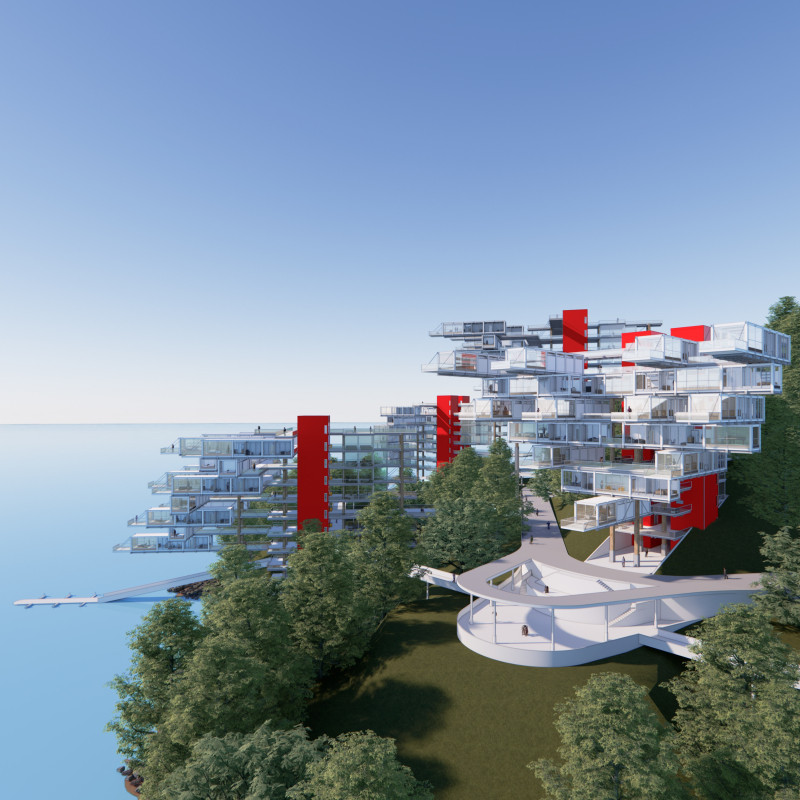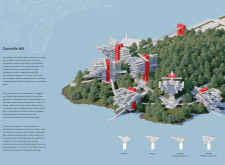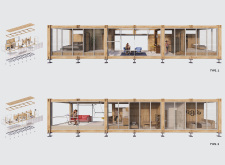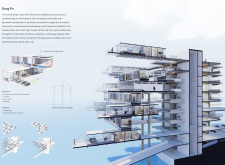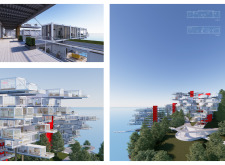5 key facts about this project
Sustainable Design Principles
The "Camellia Hill" project devotes significant attention to sustainable principles. The design incorporates modular construction techniques that allow for flexibility in accommodation while minimizing resource consumption. By utilizing eco-friendly materials such as wood, glass, steel, and concrete, the project demonstrates a commitment to reducing environmental impact. Energy-efficient features, including thermal insulation and photovoltaic panels, further support the initiative to create a self-sustaining living environment.
Community-Centric Layout
A critical aspect of the "Camellia Hill" development is its community-focused design. The arrangement of modular units is strategic, fostering interaction among residents through shared spaces such as gardens and courtyards. This layout contrasts with conventional residential designs, which often isolate living units. The emphasis on community underscores an architectural goal of enhancing the social fabric within the living environment.
Adaptive Modularity
The modular design of the project is central to its functionality. Each unit is crafted to allow individual customization while integrating seamlessly into the overall layout. This approach effectively addresses diverse lifestyle needs and demographic variations. The integration of flexible arrangements not only optimizes land use but also increases the potential for future adaptability in housing design, making it a relevant solution for urban living.
For further insights into the "Camellia Hill" project, including a detailed look at architectural plans, sections, and designs, explore the full project presentation. Understanding the underlying architectural ideas is essential for appreciating the full impact of this significant development.


